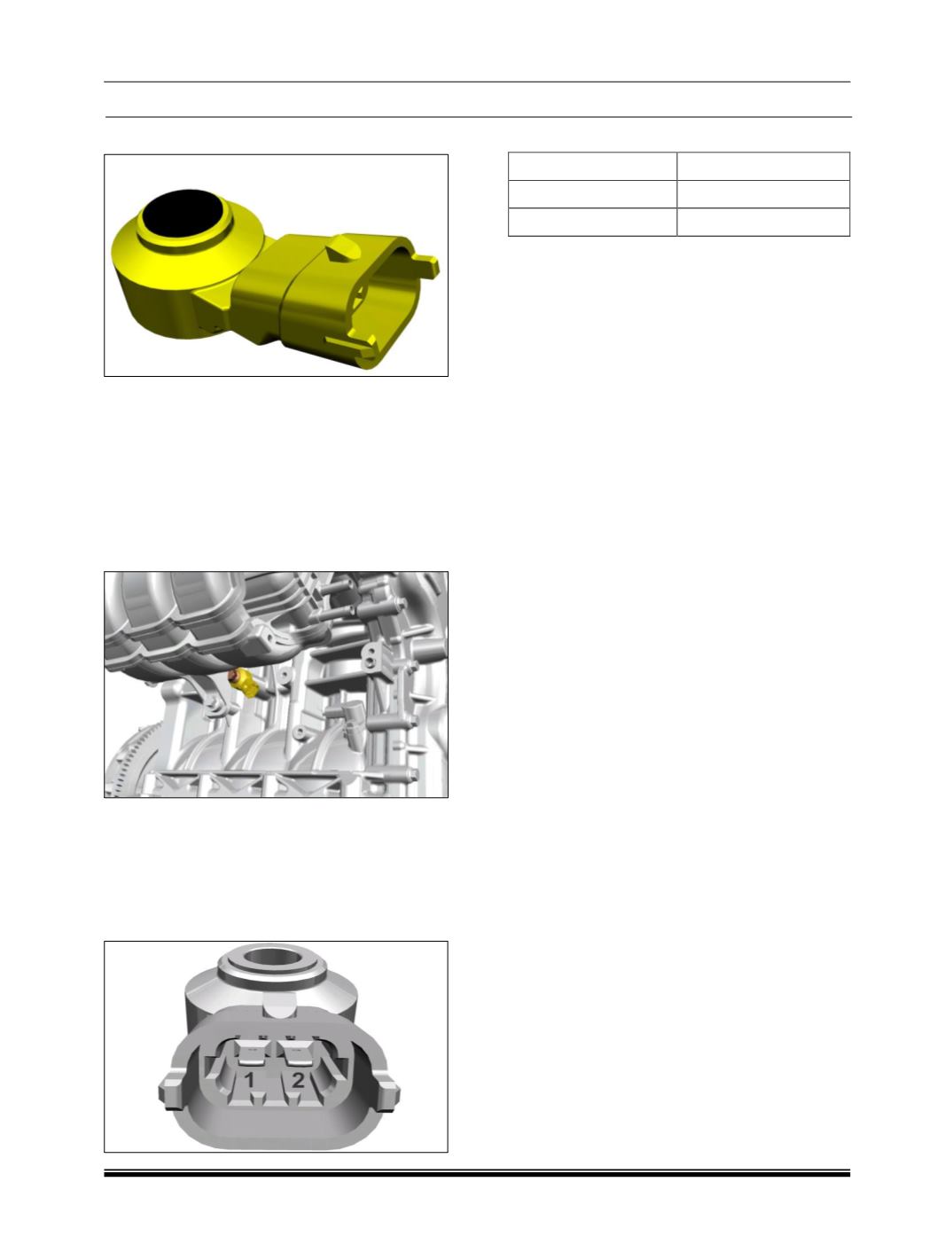

1.2L REVOTRON ENGINE
153
IV. Knock Sensor
:
Component Details :
Knock Sensor consists of a piezoelectric element.
Piezoelectric elements generate voltage when
vibration or pressure is applied to them. The
Piezoelectric element in the knock sensor is tuned
to the Engine Knock Frequency.
Component Location :
The knock sensor is mounted on the cylinder
block.
Preliminary Checks :
1. Faulty Knock Sensor
2. Check for P0327-11, P0328-12 -
Improper Wiring Harness Connections
between Knock Sensor and EMS ECU.
Connector View :
Connector Details:
Connector
Description
1
Signal
2
Ground
Component Specification :
The knock sensor provides input to ECU based
on the vibration generated by 'knocking', which
will enable ECU to limit ignition timing (Advance)
for optimum efficiency. The knocking is the
vibration generated due to uncontrolled
combustion, due to which a charge transfer
occurs in the sensor and as a result voltage is
generated which is transmitted to ECU. The knock
sensor is mounted on the cylinder block.
Application of Knock Sensor :
A piezo sensitive knock sensor with linear
characteristic is mounted on the engine block. It
transforms the structure borne vibrations into
electrical signals which can be evaluated by the
engine's ECU. The knock sensor signal is
evaluated according to intensity and spectral
information of knocking and non-knocking
combustions. As a consequence the ignition
parameter will be adjusted for the next
combustions.
Temperature Range: -40
0
C to +180
0
C
Mechanical & Electrical Characteristics :
Main resonance frequency of Sensor head: > 30
kHz
Up to 30 kHz the sensitivity must not exceed 200
mV/g.
Capacitance (of sensor head): C = 1150 ± 200 pF
Capacitance measured at frequency 1 kHz,
parallel; sensor mounted with torque 20±5Nm.
Due to parallel circuit of both sensor head and
wire capacitance only the total capacitance can
be measured.
Temperature dependence of capacitance, related
to 20
0
C room temperature.
For temperature -40
0
C... + 20
0
C≤ 1.9 pF/K
For temperatures +20
0
C ... + 150
0
C ≤ 3,3 pF/K
Shunt resistor : 4.9MΩ ± 20%
After ageing : 4-10MΩ (resistance between 2
signal leads)
Resistor Pin for supporting sleeve > 1MΩ
Temperature dependence of sensitivity at 9 kHz ≤
-0.04 mV/(g*K)










